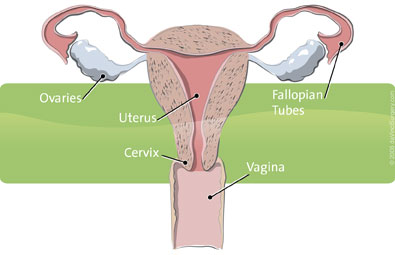Hysterectomy for Cancer
Treatments & Surgical Options for Cancer
Gynecologic cancers can affect a woman’s reproductive system, which consists of the uterus, vagina, ovaries and fallopian tubes. The uterus is a hollow, muscular organ that holds a baby as it grows inside a pregnant woman. The fallopian tubes and ovaries are located on either side of the uterus.
The most common types of gynecologic cancers are cervical, endometrial (uterine) and ovarian cancer. The specific type of cancer a woman has and how advanced it is, will determine her treatment and surgical options.
Women with early stage gynecologic cancer are often treated with hysterectomy – the surgical removal of the uterus. In this procedure, the doctor may also remove the ovaries, fallopian tubes and/or select lymph nodes.
Hysterectomy is the second most common surgical procedure for women in the US., and an estimated one third of all U.S. women will have a hysterectomy by age 60.1

PN 1002236 Rev B 01/2014
Serious complications may occur in any surgery, including da Vinci® Surgery, up to and including death. Examples of serious or life-threatening complications, which may require prolonged and/or unexpected hospitalization and/or reoperation, include but are not limited to, one or more of the following: injury to tissues/organs, bleeding, infection and internal scarring that can cause long-lasting dysfunction/pain. Risks of surgery also include the potential for equipment failure and/or human error. Individual surgical results may vary.
Risks specific to minimally invasive surgery, including da Vinci Surgery, include but are not limited to, one or more of the following: temporary pain/nerve injury associated with positioning; temporary pain/discomfort from the use of air or gas in the procedure; a longer operation and time under anesthesia and conversion to another surgical technique. If your doctor needs to convert the surgery to another surgical technique, this could result in a longer operative time, additional time under anesthesia, additional or larger incisions and/or increased complications.
Patients who are not candidates for non-robotic minimally invasive surgery are also not candidates for da VinciSurgery. Patients should talk to their doctor to decide if da Vinci Surgery is right for them. Patients and doctors should review all available information on non-surgical and surgical options in order to make an informed decision. For Important Safety Information, including surgical risks, indications, and considerations and contraindications for use, please also refer to www.davincisurgery.com/safety and www.intuitivesurgical.com/safety. Unless otherwise noted, all people depicted are models.




